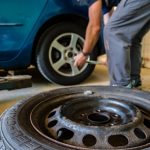Car maintenance is a broad term that covers various goals, such as extending the lifespan of your car, staying safe during a road trip, and managing your annual budget. Although there are some maintenance rules that apply to all vehicles, the best maintenance schedule for your car may differ from someone else’s. Here are five tips to help you understand how to approach your car’s maintenance schedule.
Oil Changes
Every three-thousand miles or every three months, right? Many people follow this advice and many mechanics recommend it just to play it on the safe side and because regularly changing your oil is undeniably important for car maintenance. But the truth is that many manufacturer recommendations state that you can go 5,000 miles or more and up to six months between oil changes.
Modern cars are equipped with oil change monitors that indicate when the oil needs to be changed. However, if your car doesn’t have this feature, determining the right oil change interval can be challenging. Factors such as your driving habits, climate, towing, and vehicle type can impact how often you should change the oil. For instance, if you take frequent but short trips, live in a cold area, drive a high-performance vehicle, or drive on dirty or off-road terrains, you may need to change the oil every 3,000 miles or three months, whichever comes first.

Scheduled Maintenance Recommendations
Understand the difference between a dealer’s maintenance schedule and a manufacturer’s maintenance schedule. These recommendations can be substantially different with the dealer’s recommendations nearly always more stringent than the manufacturer’s. Sometimes the interval length is different, but there are often many more scheduled maintenance items with the dealer’s recommendations. Are these dealers trying to take you for a ride, as their reputation suggests? Some would say yes. Others would say the dealer’s recommendations will extend the lifetime of your car. Moreover, it’s again a good idea to look at your driving habits. Many of the same factors that require more frequent oil changes can create benefits for a more aggressive maintenance schedule.
Painless, Self-Maintenance
If you don’t use it, you lose it. This saying applies to car maintenance more than most people realize. Most people know it’s a bad idea to let a car idle for an extended period. It’s better to forego even warming your car up before you drive it in the winter. But did you know it’s also a good idea to run your air conditioner every couple of weeks in the winter? And it’s not a bad idea to take your car out to the expressway every once in a while and open it up for at least 20 miles or so. Your grandmother is not doing her car any favors by only driving to church and the grocery store.
The Road Trip Inspection
It’s hardly an insider tip to recommend an inspection before you take your car on a road trip, where breaking down “in the middle of nowhere” holds some potential dangers, headaches, and extra costs. And if your car isn’t acclimated to long-distance highway driving, it’s probably more likely to experience problems than you realize. But not all road trips nor are all road trip inspections the same. If you have a dependable car that’s less than five years old, you’re only traveling from, say, Boston to Washington, D.C., and you’re a AAA member (with complimentary towing service), you might take your car in for a basic inspection several days before you leave. If, on the other hand, you have an older car with nearly 100,000 miles and you’re traveling from New York City to Denver, take your car in at least a week, if not two, before you leave and ask for a more complete workup.
The Check Engine Light
When your check engine light comes on without any other noticeable issues, it may not be necessary to rush to the auto shop, especially if you’re low on funds. An intermittent check engine light is often a sign of a minor problem. However, if you decide to have the problem checked out, it’s best to drive straight to the auto shop without turning off the car.
This prevents erasing the code from the car’s computer until the issue reoccurs. If the check engine light stays on continuously, it may indicate a more severe problem that should not be ignored. Even though your car may appear to be running fine, it may be getting reduced gas mileage or experiencing poor emission control.




Leave a Reply